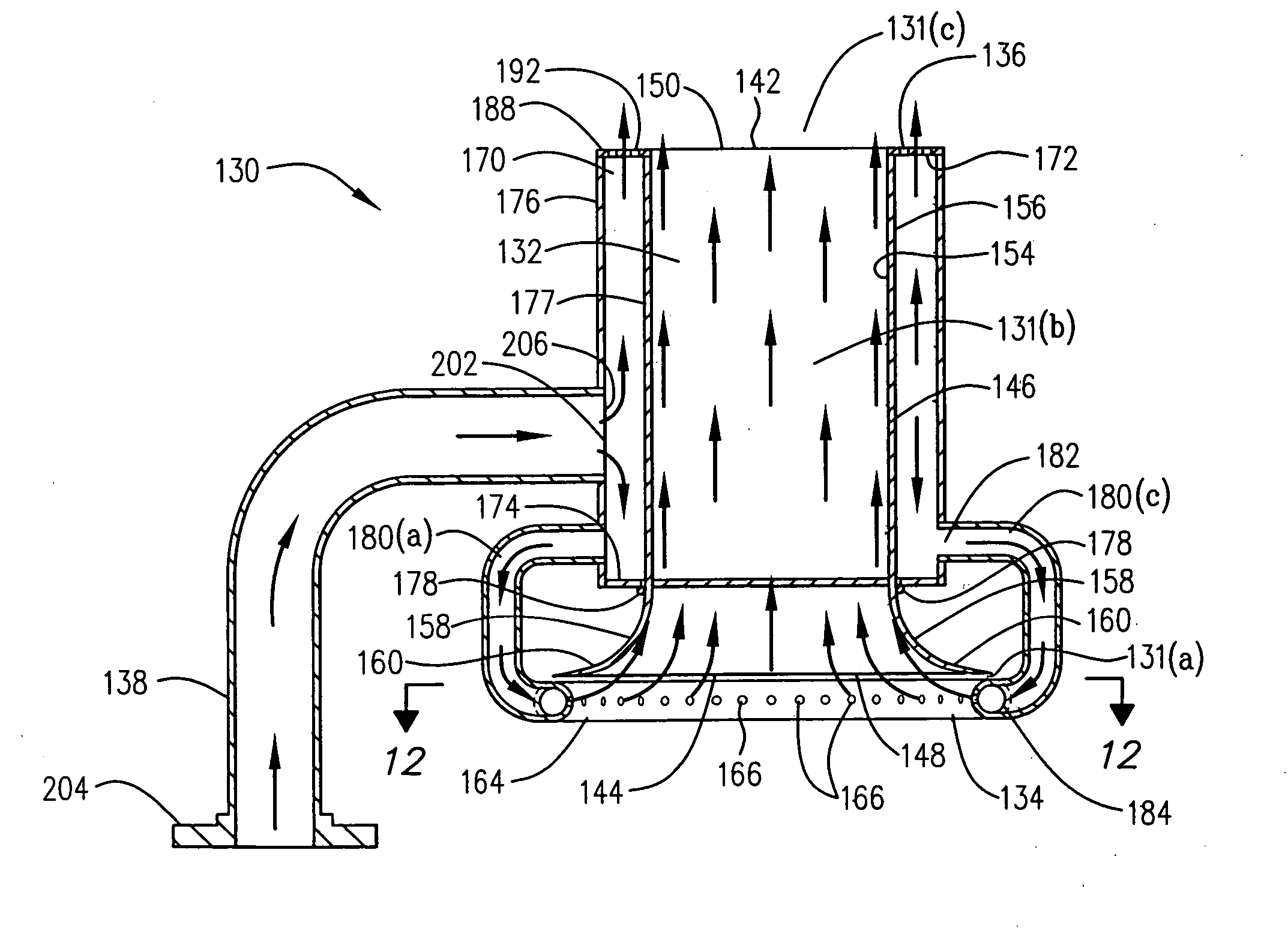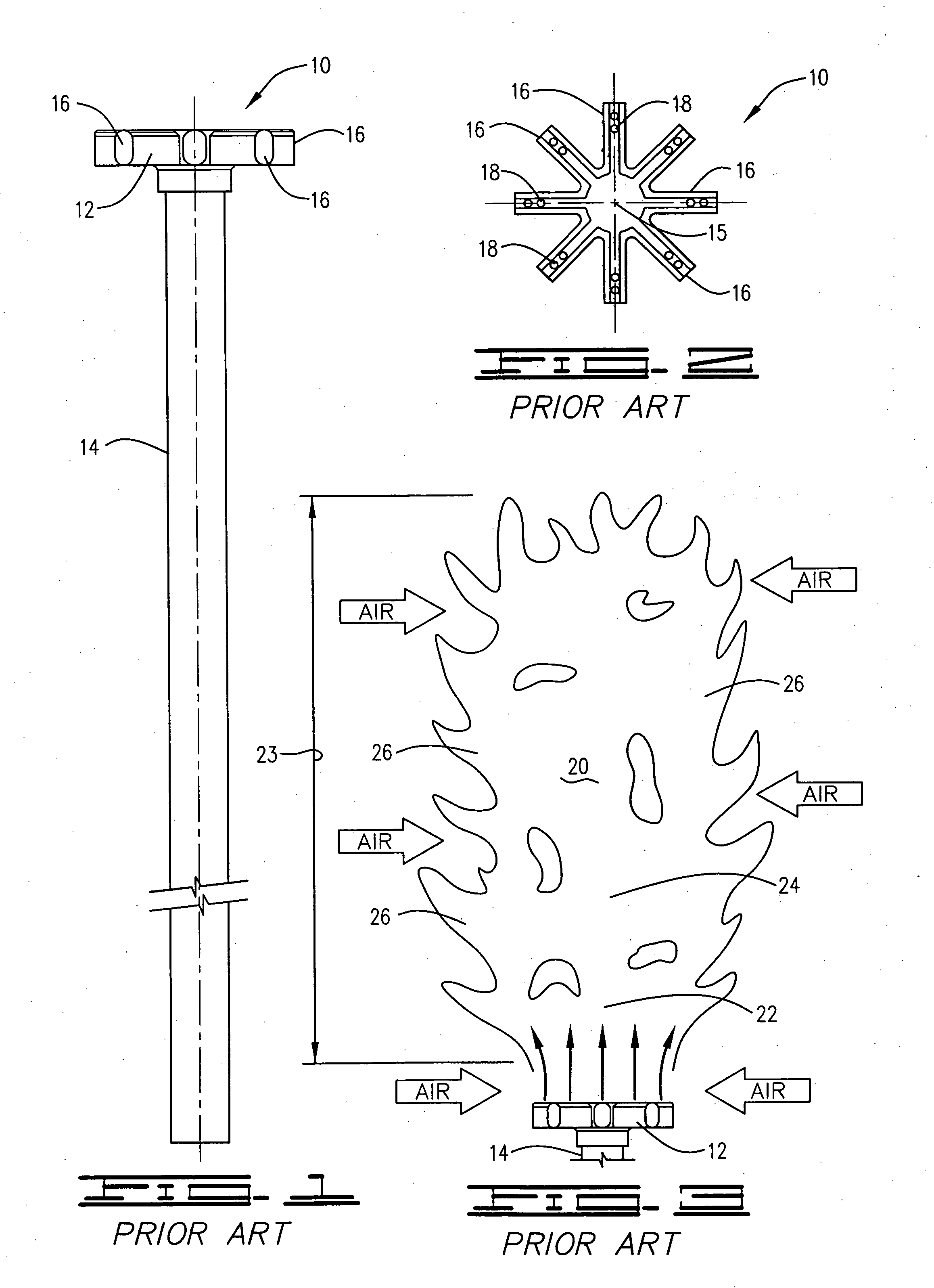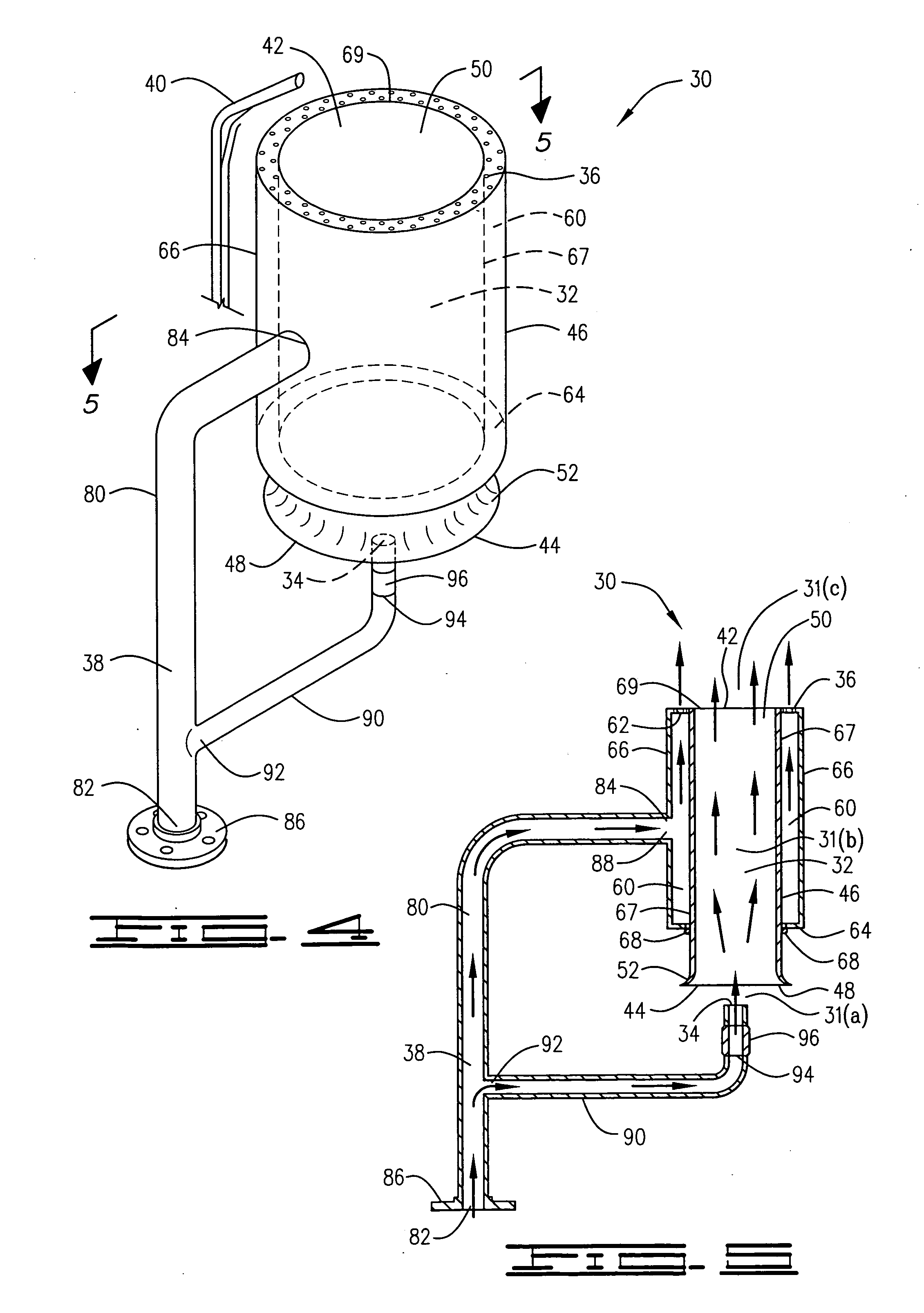Partial pre-mix flare burner and method
a technology of pre-mixed flares and burners, which is applied in the direction of incinerator equipment, lighting and heating equipment, combustion types, etc., can solve the problems of difficult to increase the flow rate of fuel to support a larger capacity, the enclosure can be costly to erect and maintain, and the need for large volume of fuel to be combusted, etc., to achieve short flame envelopes, reduce the length of flame envelopes, and increase the volume of fuel
- Summary
- Abstract
- Description
- Claims
- Application Information
AI Technical Summary
Benefits of technology
Problems solved by technology
Method used
Image
Examples
example 1
[0152]The first embodiment of the inventive flare burner, flare burner 30, was compared to a prior art high capacity diffusion-type ground flare burner, namely the burner illustrated in FIGS. 1 and 2. Two of the inventive flare burners were tested, one approximately 30 inches in length and the other approximately 16 inches in length. The inventive flare burners were ported to match the three square inches of flow area contained in the prior art flare burner.
[0153]The inventive flare burners were first tested singularly. Tests were carried out using propane and propylene. Approximately 20% of the fuel was injected into the pre-mix chamber of each of the inventive flare burners. The remaining fuel was then injected around the perimeter of the air / fuel mixture discharged from the pre-mix chamber. It was determined that with both types of fuels, each of the inventive flare burners were able to support a significant flow of fuel while developing a smokeless flame. The flame envelope from...
example ii
[0156]The third embodiment of the inventive flare burner, flare burner 230, was also tested and compared to the prior art flare burner discussed above. The performance of this embodiment of the inventive flare burner appeared to be at least equivalent to the prior art burner. However, the inventive burner produced more smoke at low pressure than the first embodiment of the inventive flare burner described in Example I. The range of smokeless operation was comparative to the smokeless performance of the prior art flare burner.
[0157]In this test, the corners of the pre-mix chamber of the inventive flare burner created complex flow patterns which visually appeared to inhibit the mixing regimen in the pre-mix chamber to some extent. As a result, spurious stratified fuel rich zones were observed to form at the corners of the pre-mix discharge area, resulting in visible smoke strata observed throughout the surface of the flame zone. On the other hand, the inventive flare burner tested was...
PUM
 Login to View More
Login to View More Abstract
Description
Claims
Application Information
 Login to View More
Login to View More - R&D
- Intellectual Property
- Life Sciences
- Materials
- Tech Scout
- Unparalleled Data Quality
- Higher Quality Content
- 60% Fewer Hallucinations
Browse by: Latest US Patents, China's latest patents, Technical Efficacy Thesaurus, Application Domain, Technology Topic, Popular Technical Reports.
© 2025 PatSnap. All rights reserved.Legal|Privacy policy|Modern Slavery Act Transparency Statement|Sitemap|About US| Contact US: help@patsnap.com



